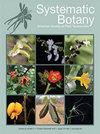基于转录组和基因组图谱的无患子科进化框架
IF 0.8
3区 生物学
Q4 EVOLUTIONARY BIOLOGY
引用次数: 0
摘要
棘科是热带开花植物的一个科,大约有4900种。尽管形态性状存在显著差异,但由于一些主要世系之间关系的不确定,对性状进化模式的研究受到了限制。我们从这些主要谱系中取样了16个分类群,利用5个新测序的鸟枪式基因组图谱加上7个新的和4个公开可用的转录组,来估计一个系统基因组框架。我们使用OrthoFinder2来推断具有强分支支持的物种树。除了Crabbea的位置外,我们的结果证实了最新的叶绿体和nrITS序列拓扑结构。在587个单拷贝位点中,16个物种均恢复到10个;从这10个位点估计的RAxML树的拓扑结构与本研究中组装的其他数据集相同,除了三个Barleria样本物种之间的关系;然而,与使用更多数据重建的树相比,分支支持度较低。采用ABBA-BABA试验研究了涉及蟹类的基因渗入模式;很少有核苷酸支持替代拓扑结构。587个位点和6136个正群树的splittree网络揭示了andrographidae, whitfieldiae和Neuracanthus分支之间的冲突。对树空间的主成分分析没有发现明显的树簇。我们的研究结果基于基因组筛选和转录组序列的组合,有力地证实了先前发表的棘科植物叶绿体和基于nr- its的系统发育,并增加了Barlerieae、andrographidae、whitfieldiae和Neuracanthus的分辨率。我们对棘科关系的了解的这一进展将使我们能够在增加分类单元采样的研究中研究这一不同植物群体的特征进化和其他现象。本文章由计算机程序翻译,如有差异,请以英文原文为准。
An Evolutionary Framework of Acanthaceae Based on Transcriptomes and Genome Skims
Abstract Acanthaceae is a family of tropical flowering plants with approximately 4900 species. Despite remarkable variation in morphological traits, research on patterns of character evolution has been limited by uncertain relationships among some of the major lineages. We sampled 16 taxa from these major lineages to estimate a phylogenomic framework using a combination of five newly sequenced shotgun genome skims plus seven new and four publicly available transcriptomes. We used OrthoFinder2 to infer a species tree with strong branch support. Except for the placement of Crabbea, our results corroborate the most recent chloroplast and nrITS sequence-based topology. Of 587 single copy loci, 10 were recovered for all 16 species; a RAxML tree estimated from these 10 loci resulted in the same topology as other datasets assembled in this study, with the exception of relationships among three sampled species of Barleria; however, branch support was lower compared to the tree reconstructed using more data. ABBA-BABA tests were conducted to investigate patterns of introgression involving Crabbea; few nucleotides supported alternative topologies. SplitsTree networks of the 587 loci and 6136 orthogroup trees revealed conflict among the branches leading to Andrographideae, Whitfieldieae, and Neuracanthus. A principal components analysis in treespace found no distinct clusters of trees. Our results based on combined genome skim and transcriptome sequences strongly corroborate the previously published chloroplast and nr-ITS-based phylogeny of Acanthaceae with increased resolution among Barlerieae, Andrographideae, Whitfieldieae, and Neuracanthus. This advance in our knowledge of Acanthaceae relationships will allow us to investigate character evolution and other phenomena within this diverse group of plants in studies with increased taxon sampling.
求助全文
通过发布文献求助,成功后即可免费获取论文全文。
去求助
来源期刊

Systematic Botany
生物-进化生物学
CiteScore
1.80
自引率
10.00%
发文量
72
审稿时长
6-12 weeks
期刊介绍:
Systematic Botany Monographs is a series of peer-reviewed taxonomic monographs and revisions published the American Society of Plant Taxonomists. ISSN 0737-8211, ISBN prefix 978-0-912861. No; volumes of Systematic Botany Monographs must be ordered separately. ASPT membership inludes only a subscription to the quarterly journal Systematic Botany. SBM is supported by sales, author"s subsidies, and donations.
 求助内容:
求助内容: 应助结果提醒方式:
应助结果提醒方式:


